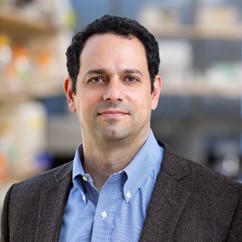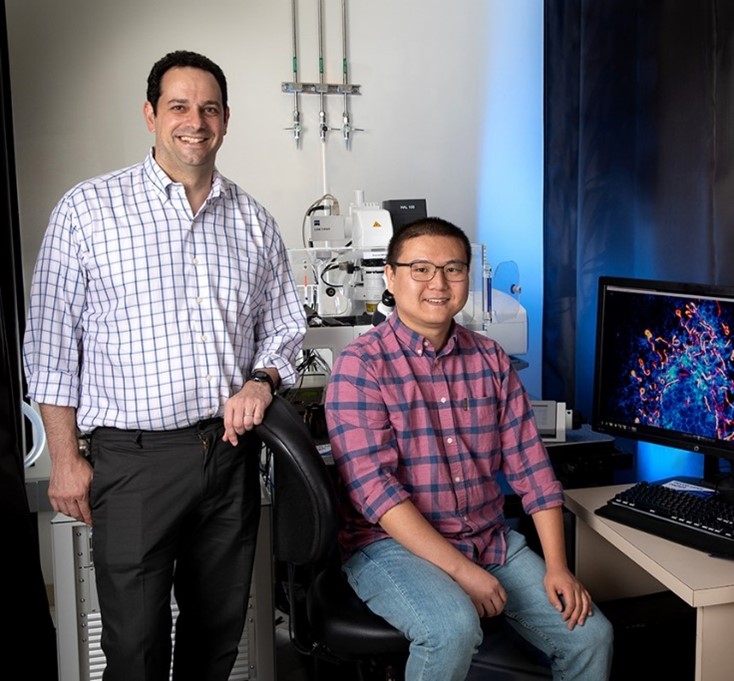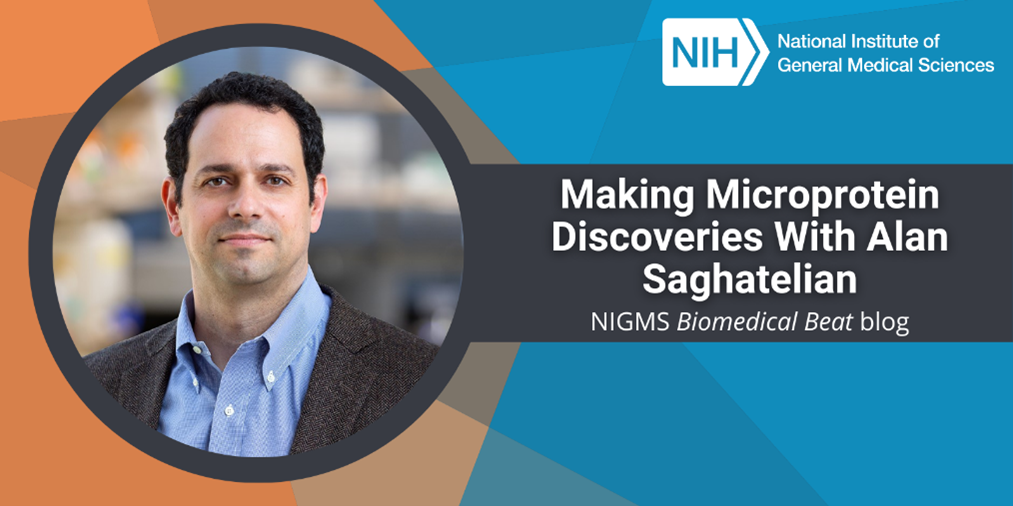
“There aren’t many professions that can provide this much opportunity for learning, especially when it comes to understanding how our bodies work. I really love what I do—I wouldn’t trade it for anything,” says Alan Saghatelian, Ph.D., a professor in the Clayton Foundation Laboratories for Peptide Biology at the Salk Institute for Biological Studies in La Jolla, California. From studying new facts and experimental techniques to adopting new ways of thinking, researchers never stop learning, and Dr. Saghatelian credits his love for learning and exploring as reasons why he’s perfectly suited for science. He’s used these passions to build a successful career in biochemistry.
From Chemistry to Biology
Dr. Saghatelian’s love for chemistry began when he was young. He was drawn to how predictable it could be: Mix two chemical compounds in the same way and they’ll always combine to form the same substance, as dictated by the rules of chemistry.
As an undergraduate student at the University of California, Los Angeles, he became more interested in understanding how the fundamental rules of chemistry could be applied to other fields, such as medicine. “As I explored organic chemistry, it was fun to learn how medicines produced in the lab could change our behavior or change how we feel, for example,” he says. He joined a lab studying organometallic chemistry, and within a year, knew he wanted to pursue a Ph.D.
Dr. Saghatelian was drawn to Scripps Research in La Jolla, California, for his doctoral work because of how researchers there were applying organic chemistry to biological molecules. He joined the lab of Reza Ghadiri, Ph.D., and studied peptide catalysts—small protein fragments designed in the lab that can speed up chemical reactions.
Dr. Saghatelian’s graduate work solidified his interest in understanding how to apply chemistry to biological questions. He joined the lab of Benjamin Cravatt, Ph.D., also at Scripps, as a postdoctoral researcher (postdoc) on a project to identify the substrates of newly discovered enzymes. They used research organisms to identify enzyme targets by comparing the amounts of different molecules in a cell without a functional enzyme to the amounts in a normal cell. When the research organism didn’t have a functional enzyme, the amounts of the molecules targeted by that enzyme were higher.
Researchers can apply this technique in various ways to many different questions, and Dr. Saghatelian did just that when he moved to Harvard University in Cambridge, Massachusetts, as an associate professor of chemistry and chemical biology. Using a variation of this technique, he and his colleagues discovered a new family of lipids. They found higher levels of these lipids in mice with a form of diabetes than in healthy mice. In the future, doctors could potentially measure the levels of these lipids to test patients for diabetes.
Discovering Microproteins

Since moving to Salk, Dr. Saghatelian has branched into the world of microproteins, which are proteins shorter than 100 amino acids. In the past, scientists considered peptides of this size too small to have a function or even to be classified as proteins. However, Dr. Saghatelian and other researchers have found microproteins that play roles in important cell processes in humans and other organisms.
To find these microproteins, researchers catalogue all of a cell’s mRNA transcripts—the blueprints to make proteins—and generate a list of all the potential amino acid sequences they could code. After filtering out known proteins and proteins larger than 100 amino acids, they’re left with potential microproteins. From there, the researchers search for genes in other species that code for these potential microproteins because they’re more likely to be true microproteins if they’re conserved across species. Once Dr. Saghatelian and his team find a candidate microprotein, they check if it binds to any other proteins. And if it does, they can begin to infer the microprotein’s function from that of the protein or the complex the protein belongs to.
One of the first microproteins the team studied using this approach interacted with a protein complex called Ku70/80, which is involved in repairing breaks in DNA that naturally occur during DNA replication. Further lab tests confirmed that this microprotein, called MRI, plays a role in repairing DNA damage.
In the future, Dr. Saghatelian and his team hope that their work can lead to the development of new medicines. But for now, they’re celebrating the advances they’re making in protein biology. “We’ve come a long way in understanding human biology, but there’s still a lot to learn. The basic studies that we do contribute to scientific knowledge and fill in those gaps. And one day, they may be the key to bettering human health,” he says.
For Dr. Saghatelian, it all comes back to his love for learning. “It’s always fun when students and postdocs who are excited to learn join the lab. It rekindles the excitement for me,” he says. “I’m proud that I’m providing an environment where my students can learn, excel, and go on to have fulfilling careers.”
Dr. Saghatelian’s work is supported by NIGMS through grant R01GM102491.







